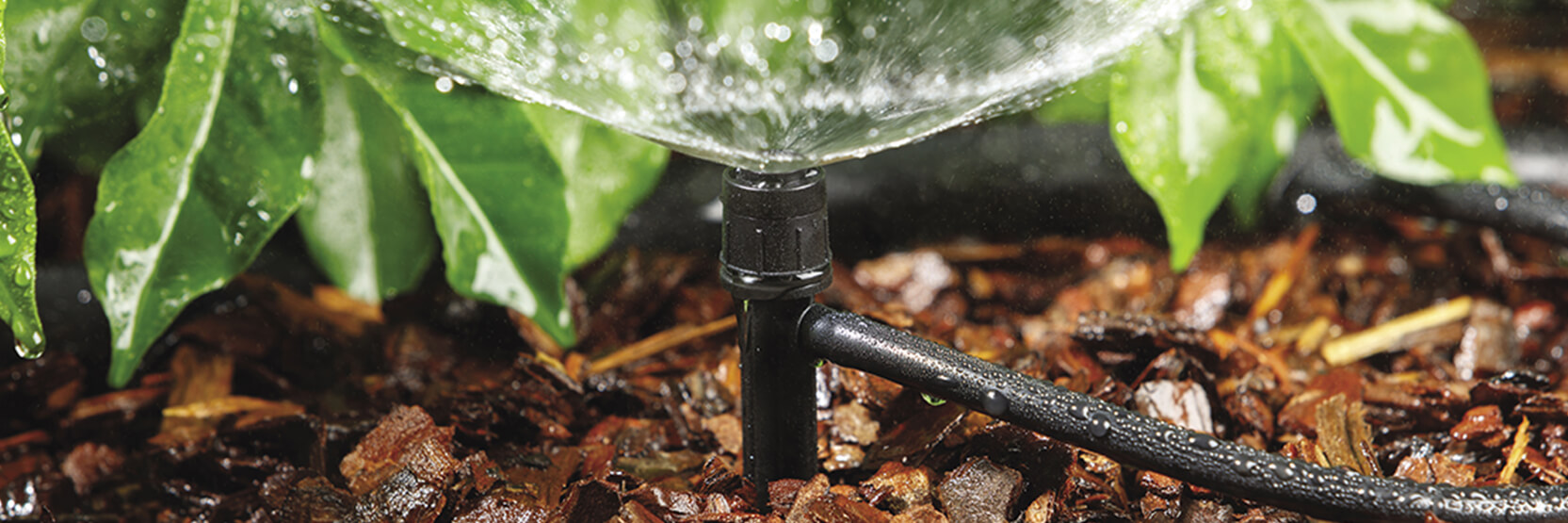Setting up an irrigation system allows you to effortlessly and efficiently target your plants’ specific watering needs. The initial investment in time is paid off with years of hands-free irrigation. Using the Neta DIY irrigation planner and reading through our step-by-step installation article will make the installation process easy.
Make sure to keep in mind these 10 handy hints and tips to make the job even easier.
#1 Take the time to plan
Take ample time to design your irrigation plan using the Neta DIY irrigation planner to ensure you have all the components you need to get the job done and to ensure your irrigation system will water your garden effectively.
#2 Let the sun help out
To remove the curl from new poly pipe, unrolling it and laying it in the sun will help straighten it out. Rigid Pipe Stakes can hold the poly pipe in place as it softens and relaxes.
#3 Heat things up
Heating the end of the poly pipe in hot water for a few minutes will soften it and help when slipping the poly pipe over the barb on the fittings.
#4 A clean cut
Make sure the end of the poly pipe is cut as straight as possible to ensure a good connection with the fittings. The poly pipe is soft enough to be cut with a good pair of scissors.
#5 Ratchet Clips
Rachet Clips are important to help keep fittings in place, especially if you have strong water pressure. Use a pair of pliers to lock the Rachet Clips in place for a strong fit. Make sure the arms of the Rachet Clip are properly aligned when clicking it tightly, if they are at an angle to each other they are at risk of popping open.
#6 The Multi Tool
The Multi Tool serves as a punch spanner and has a hex socket that can be used to push microjets and joiners into place. It’s especially useful for when using Goof Plugs to repair holes in the pipe since they can sometimes be fiddly to handle.
#7 Stay clean
Avoid getting dirt in the pipes or fittings while assembling your system as this can block the drippers and sprayers.
#8 Consider your soil
Your soil type can affect the frequency of watering. A light sandy soil will require watering more often and for longer than a heavy clay soil.
#9 Perform a test
To determine how long to water your garden, run the irrigation in 10 minute increments and wait a couple of hours. Then dig down into the soil to see how far the water has penetrated. If it is still dry below the surface you will need to run your irrigation for longer and if it is soggy you may need to water for less time. This may require adjusting in hotter weather.
#10 Water wisely
To avoid wasting water, try to water early in the morning to avoid loss through evaporation. An electronic tap timer can help with this early morning chore.
Follow these tips and once you have your irrigation system set up and have determined the best routine to suit your soil and plants, all your garden watering needs will be taken care of at the turn of a tap.

You Might Also Like
Easy Irrigation with Neta – Pots,Borders, Beds & Lawns
It takes a lot of work to keep your gardens looking great, the chores are never ending. It’s a good...
View NowEasy Irrigation with Neta – Installation Tips
Here are a few tips and tricks to make the installation of your irrigation system easier. First thing to look...
View Now